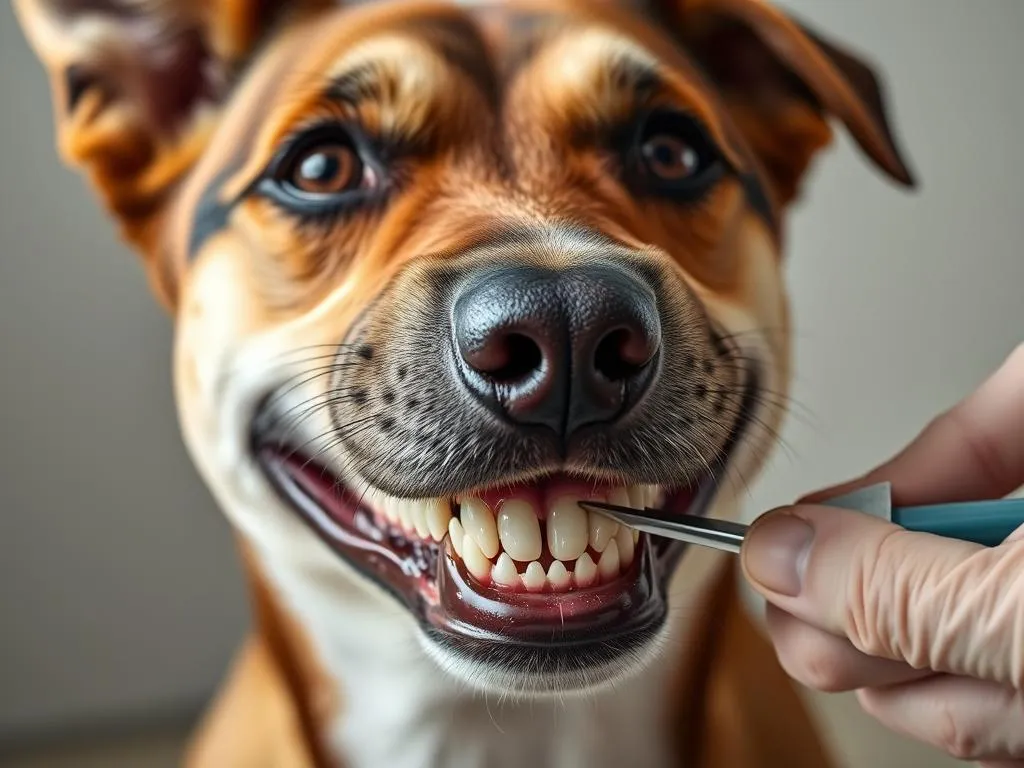
Introduction
Dog health care is a vital aspect of responsible pet ownership, and dental health is one of the most critical components of overall well-being. A dog’s mouth is a breeding ground for bacteria, and without proper dental care, this can lead to serious health issues. In fact, many dog owners underestimate the importance of regular dental hygiene, which is why knowing how to clean dogs’ teeth is essential. This article aims to provide dog owners with practical tips and insights into maintaining their pet’s dental health, ensuring that their furry friends lead happier, healthier lives.
Understanding Dog Dental Health
Importance of Dental Care in Dogs
Dental health is not just about having a clean mouth; it directly affects a dog’s overall health. Poor dental hygiene can lead to periodontal disease, which affects the gums and surrounding tissues, and can even enter the bloodstream, causing severe complications such as heart disease and kidney issues. According to the American Veterinary Dental College, over 80% of dogs show signs of dental disease by the age of three. This staggering statistic emphasizes the need for proactive dental care.
Signs of Dental Problems in Dogs
Being aware of the signs of dental problems can help you address issues before they escalate. Common signs include:
- Bad breath (halitosis): This is often the first noticeable sign of dental issues.
- Red or swollen gums: Healthy gums should be pink and firm.
- Difficulty eating or chewing: Watch for your dog avoiding hard food or showing signs of discomfort while eating.
- Excessive drooling: Increased saliva production can indicate oral pain or discomfort.
- Loose or missing teeth: This is a clear sign of advanced dental disease.
Recognizing these signs early can make a significant difference in your dog’s health and comfort.
How to Clean Dogs’ Teeth
Tools and Supplies Needed
Before embarking on the journey of dental care, you’ll need the right tools:
- Types of toothbrushes: Look for dog-specific toothbrushes, which often have softer bristles and angled heads. You can also use finger brushes, which allow for more control.
- Dog-friendly toothpaste: Never use human toothpaste, as it can be toxic to dogs. Instead, choose a pet-safe toothpaste that comes in flavors your dog will enjoy, like chicken or peanut butter.
- Dental chews and toys: These can supplement your cleaning routine by helping to reduce plaque and tartar buildup.
Step-by-Step Guide to Cleaning Your Dog’s Teeth
Preparing Your Dog
To make the teeth-cleaning process smoother, start by getting your dog comfortable with the idea. Here are some techniques:
- Familiarization: Allow your dog to sniff the toothbrush and toothpaste. You can even let them taste the toothpaste to create positive associations.
- Gentle handling: Gradually introduce gentle handling of your dog’s mouth, rewarding them with treats and praise.
The Actual Teeth Cleaning Process
- Choose the right time and place: Pick a quiet time and a comfortable spot where your dog feels relaxed.
- Positioning your dog: Depending on your dog’s size, you can have them sit or lie down. Ensure they are secure but comfortable.
- Brushing technique: Use circular motions to brush the teeth, focusing on the gum line, where plaque tends to accumulate. Brush for about 30 seconds to a minute on each side.
- Handling resistance or anxiety: If your dog resists, don’t force it. Take breaks and gradually build up their comfort level. Always reward them after each session.
Frequency of Teeth Cleaning
For optimal dental health, it’s recommended to brush your dog’s teeth at least two to three times a week. However, daily brushing is ideal. Establishing a routine not only helps maintain cleanliness but also ensures that your dog becomes accustomed to the process. If you notice signs of dental issues, consider increasing the frequency of cleaning sessions.
Alternative Dental Care Methods
Dental Chews and Treats
Incorporating dental chews and treats into your dog’s diet can be a fun way to help maintain oral hygiene. These products are designed to reduce plaque and tartar buildup as your dog chews. Some recommended brands include:
- Greenies
- Nylabone
- Virbac C.E.T. Enzymatic Oral Hygiene Chews
Always check for the Veterinary Oral Health Council (VOHC) seal of approval when selecting dental treats.
Professional Dental Cleaning
Regular veterinary check-ups are essential for maintaining your dog’s dental health. A professional cleaning involves a thorough examination, scaling, and polishing of the teeth under anesthesia. This allows for a comprehensive cleaning that you simply cannot achieve at home. Expect to pay between $300 to $600 for a professional cleaning, depending on your location and your dog’s needs. It’s generally recommended to have a professional dental cleaning done at least once a year.
Dental Water Additives and Sprays
Dental water additives and sprays can be effective in reducing plaque and tartar buildup. They are easy to use—simply add them to your dog’s drinking water. Look for products that are safe and specifically formulated for dogs. Always consult your veterinarian before introducing new products to ensure they’re appropriate for your pet.
Preventative Care for Dog Dental Health
Diet and Nutrition
A dog’s diet plays a significant role in their dental health. Foods that promote dental hygiene are often high in fiber and low in carbohydrates. Look for high-quality dog food that includes whole ingredients and is free from fillers. Additionally, incorporating raw vegetables like carrots can help clean teeth while providing a healthy snack.
Routine Veterinary Check-ups
Routine veterinary check-ups should include a dental examination. Your vet will assess your dog’s dental health and recommend any necessary treatments or cleaning. Ideally, dental check-ups should occur at least once a year, but dogs with existing dental issues may require more frequent visits.
Home Care Practices
Incorporating dental hygiene into your dog’s daily routine can make a significant impact. Consider these practices:
- Daily inspections: Regularly check your dog’s mouth for signs of trouble, such as bad breath or swollen gums.
- Playtime incorporation: Use dental toys during playtime to naturally promote dental health. Chewing on these toys can help remove plaque and tartar.
Common Myths About Dog Dental Care
Myth: Dogs can clean their teeth naturally
While it’s true that chewing can help reduce plaque, dogs cannot maintain their dental health without assistance from their owners. Regular brushing is essential.
Myth: Only older dogs need dental care
Dental care should begin at a young age. Puppies can also suffer from dental issues, and starting a routine early can prevent problems later in life.
Myth: All dental products are safe for dogs
Not all dental products are created equal. Always look for products approved for canine use and consult your veterinarian before introducing any new items into your dog’s dental care routine.
Conclusion
Maintaining your dog’s dental health is vital for their overall well-being. By understanding how to clean dogs’ teeth and establishing a regular dental care routine, you can help prevent serious health issues down the line. Regular brushing, professional cleanings, and a healthy diet are all essential components of effective dental care.
Taking the time to invest in your dog’s dental health now will ensure a happier, healthier future for your furry friend. Start today by gathering your supplies and introducing your dog to a new dental care routine that will keep their smiles bright and their health at its best.









